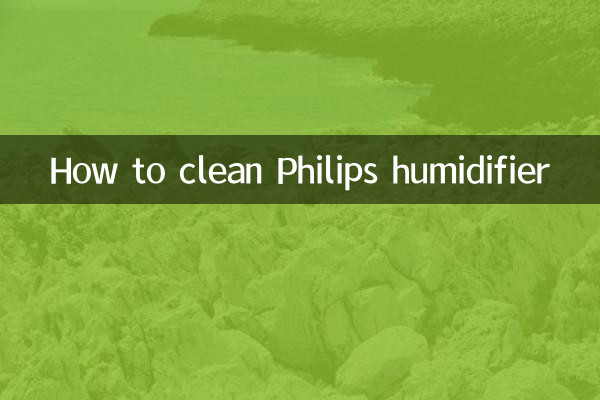How to clean Philips humidifier
With the arrival of winter, the problem of dry air has become more and more prominent, and humidifiers have become an essential appliance for many families. Philips humidifiers are popular for their efficient performance and user-friendly design, but after long-term use, cleaning and maintenance become the focus of users. This article will introduce in detail the cleaning method of Philips humidifier, and attach the hot topic data in the past 10 days to help you better use and maintain the humidifier.
1. Inventory of hot topics in the past 10 days

The following are topics related to healthy home appliances that have been hotly discussed on the Internet in the past 10 days. Among them, the cleaning issue of Philips humidifiers has been mentioned many times:
| Ranking | hot topics | Number of discussions (10,000) |
|---|---|---|
| 1 | Precautions for using humidifier in winter | 12.5 |
| 2 | Philips humidifier cleaning tutorial | 9.8 |
| 3 | Cases of respiratory diseases caused by humidifiers | 7.3 |
| 4 | How to choose a safe and healthy humidifier | 6.2 |
| 5 | Popular science on water quality requirements for humidifiers | 5.4 |
2. Detailed explanation of Philips humidifier cleaning steps
Regular cleaning of your humidifier will not only prolong its life but also prevent bacterial growth. Here is a detailed cleaning guide for your Philips humidifier:
1. Preparation
(1) Turn off the power and unplug;
(2) Empty the remaining water in the water tank and base;
(3) Prepare white vinegar or special detergent, soft cloth, cotton swabs and other tools.
2. Water tank cleaning
(1) Mix white vinegar and water in a ratio of 1:1 and pour into the water tank;
(2) Let it sit for 30 minutes to dissolve scale;
(3) Clean the inner wall with a soft brush, paying special attention to the corners;
(4) Rinse 3 times with clean water to ensure there is no residue.
3. Base cleaning
(1) Use a cotton swab dipped in white vinegar to clean the atomizer tablet;
(2) Wipe the power interface with a soft cloth (it needs to be kept dry);
(3) Check whether the water inlet is blocked.
4. Drying and assembly
(1) All parts are allowed to dry naturally for 12 hours;
(2) Make sure it is completely dry before filling with water.
3. Cleaning cycle recommendations
Depending on frequency of use, the following cleaning schedule is recommended:
| Usage scenarios | daily maintenance | deep cleaning |
|---|---|---|
| continuous use | Change water + simple rinse | 1 time a week |
| intermittent use | Empty before storing | 2 times a month |
| Long term idle | - | Wash thoroughly before use |
4. Frequently Asked Questions
Q1: Can it be cleaned with disinfectant?
A: Not recommended. Chemical residues may be inhaled by aerosol, so it is recommended to use food-grade white vinegar or citric acid.
Q2: How to deal with severe scale?
A: After soaking in warm water, use a toothbrush to gently brush away stubborn scale. Do not use steel wool.
Q3: What should I do if there is still an odor after cleaning?
A: It may be that the sealing ring is moldy. You need to remove it and wipe it with an alcohol cotton pad, or contact after-sales service for replacement parts.
5. Expert advice
1. Use distilled or purified water to reduce scale formation
2. Avoid adding essential oils and other substances that may corrode the body
3. Check whether the filter (if any) needs to be replaced every 6 months
4. Be sure to wear gloves to protect your hands when cleaning
Through the above system cleaning methods, your Philips humidifier will always be in optimal working condition and provide a healthy and humid air environment for your family. Remember to bookmark this article and check and clean it regularly!

check the details

check the details